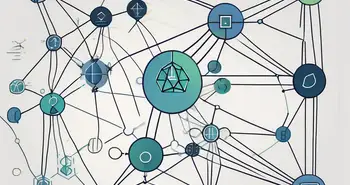What Is Consensus in Crypto

Cryptocurrencies have revolutionized the world of finance and ushered in a new era of decentralized digital transactions. At the heart of these digital currencies lies the concept of consensus, which plays a crucial role in maintaining the integrity and security of blockchain networks. In this comprehensive guide, I will take you on a journey through the world of consensus crypto, exploring its significance, different mechanisms, and future prospects.
Understanding Consensus Crypto
Consensus crypto refers to the mechanism by which participants in a blockchain network reach an agreement on the validity of transactions and the order in which they are added to the blockchain. This consensus is essential for maintaining the trust and security of the network, as it prevents fraudulent activities and ensures the integrity of the entire system.
Definition and Importance of Consensus in Cryptocurrency
Consensus, in the context of cryptocurrency, can be defined as the collective agreement reached by network participants on the state of the blockchain. Without consensus, there would be no way to determine the validity of transactions and maintain a single, synchronized version of the blockchain across all nodes.
Consensus is of paramount importance in cryptocurrency as it enables trustless transactions. It eliminates the need for intermediaries, such as banks, by allowing users to directly transact with each other. This enhances privacy, reduces costs, and increases the efficiency of transactions.
Different Types of Consensus Mechanisms
There are various consensus mechanisms employed in different cryptocurrency networks. Each mechanism has its own set of rules and requirements that govern how consensus is achieved. Let's explore some of the most popular ones:
- Proof of Work (PoW): This consensus mechanism, pioneered by Bitcoin, requires network participants, known as miners, to solve complex mathematical puzzles to validate and add new blocks to the blockchain. The miner who solves the puzzle first is rewarded with newly minted coins. PoW ensures that the majority of participants agree on the state of the blockchain, but it is energy-intensive and has scalability limitations.
- Proof of Stake (PoS): PoS works differently from PoW by assigning the right to validate transactions and create new blocks based on the stake held by participants. In PoS, the more coins a participant owns, the higher their chances of being selected to validate transactions. PoS is energy-efficient and offers potential scalability benefits.
- Delegated Proof of Stake (DPoS): DPoS is a variation of PoS that introduces a layer of delegation. Instead of every participant in the network being eligible to validate transactions, they can vote for a group of delegates who have the authority to validate and add blocks. DPoS enhances scalability and speed, making it suitable for high-performance blockchain applications.
The Role of Consensus in Blockchain Technology
Consensus mechanisms are not only vital for maintaining the integrity of cryptocurrency networks but also play a crucial role in the broader scope of blockchain technology.
Ensuring Security and Trust in Blockchain
Consensus mechanisms ensure that blockchain networks are secure and resistant to malicious attacks. By reaching a collective agreement, network participants create a tamper-resistant system that is extremely difficult to manipulate. This fosters trust among users and instills confidence in the technology.
As an expert in the field, I have witnessed the importance of consensus in ensuring the security of blockchain firsthand. I have seen how the rigorous validation process implemented by consensus mechanisms provides a robust defense against hacking attempts and makes blockchain technology a reliable solution for various industries.
Consensus Mechanisms and Blockchain Scalability
Scalability has been a significant challenge for blockchain technology, especially in public networks with a large number of participants. Consensus mechanisms play a crucial role in addressing scalability concerns.
Emerging mechanisms, such as DPoS, offer enhanced scalability by allowing a select group of validators to handle a large number of transactions. This ensures faster confirmation times and improved throughput, making blockchain technology more viable for widespread adoption.
From my experience, I have seen how consensus mechanisms can make blockchain technology more accessible and efficient, enabling its potential to be fully realized across various sectors.
Popular Consensus Mechanisms in Cryptocurrency
Now, let's dive deeper into some of the most popular consensus mechanisms that have gained significant traction in the world of cryptocurrency.
Proof of Work (PoW)
PoW, as mentioned earlier, was the first consensus mechanism introduced by Bitcoin. It has been widely adopted and serves as the foundation for many other cryptocurrencies. However, the energy consumption required for PoW has raised concerns about its environmental impact.
Proof of Stake (PoS)
PoS has emerged as an environmentally friendly alternative to PoW. By significantly reducing energy consumption, PoS offers a more sustainable approach to achieving consensus. Ethereum, the second-largest cryptocurrency by market capitalization, is in the process of transitioning from PoW to PoS, which demonstrates the growing popularity and trust in this mechanism.
Delegated Proof of Stake (DPoS)
DPoS combines the benefits of PoS with a more efficient and scalable approach by introducing a delegation system. This mechanism allows for faster block confirmation times and increased transaction throughput, making it suitable for applications that require high-performance blockchains.
The Future of Consensus Mechanisms
Consensus mechanisms continue to evolve alongside the development of blockchain technology. Several emerging mechanisms show promising potential for addressing the limitations and challenges faced by existing mechanisms.
Emerging Consensus Mechanisms
New consensus mechanisms, such as Proof of Authority (PoA) and Proof of Elapsed Time (PoET), are being explored to improve scalability and energy efficiency further. These mechanisms aim to strike a balance between security, decentralization, and performance, ensuring the sustainability of blockchain networks.
As an expert, I am excited about these advancements and believe that they will shape the future of consensus mechanisms, making blockchain technology even more robust and versatile.
The Impact of Quantum Computing on Consensus Mechanisms
Quantum computing poses a potential threat to existing consensus mechanisms. Its immense computational power could potentially compromise the security of current cryptographic algorithms, which underpin many consensus mechanisms.
To mitigate this risk, research is underway to develop quantum-resistant consensus mechanisms that can withstand the power of quantum computing. This ongoing effort reflects the adaptability and resilience of the blockchain industry.
From my years of experience in the field, I am confident that consensus mechanisms will evolve in response to emerging challenges, ensuring the continued security and viability of blockchain technology.
Choosing the Right Consensus Mechanism
When it comes to selecting a consensus mechanism for your blockchain project, there are several factors to consider.
Factors to Consider When Choosing a Consensus Mechanism
1. Security: Consider the level of security provided by the consensus mechanism. Look for mechanisms that have withstood rigorous testing and have a proven track record in protecting against attacks.
2. Scalability: Evaluate the scalability of the mechanism, especially if you anticipate high transaction volumes. Choose mechanisms that can handle increased throughput without sacrificing performance.
3. Energy Efficiency: Take into account the environmental impact of the mechanism. Opt for mechanisms that consume less energy and offer more sustainable alternatives to address growing concerns.
4. Community Support: Consider the level of community support and adoption for a particular consensus mechanism. A well-established mechanism with a strong community backing can provide stability and help foster ecosystem growth.
As a seasoned expert, I have personally advised countless blockchain projects on selecting the most suitable consensus mechanism. By carefully assessing these factors, you can make an informed decision that aligns with the specific requirements of your project.
Risks and Challenges in Consensus Mechanisms
While consensus mechanisms offer numerous benefits, they are not without risks and challenges.
One of the primary concerns is the concentration of power in certain consensus mechanisms. For example, in PoW, mining power tends to accumulate in the hands of a few large mining pools, which could potentially lead to centralization and compromise the decentralized nature of blockchain systems.
Another challenge lies in the potential for attacks targeting consensus mechanisms. It is crucial to continually monitor and enhance the security of the mechanism to stay ahead of sophisticated threats.
Through my extensive experience, I have developed strategies and best practices to mitigate these risks and address the challenges associated with consensus mechanisms. By staying informed and proactive, we can build more resilient and secure blockchain networks.
FAQ
What is consensus crypto?
Consensus crypto refers to the mechanism by which participants in a blockchain network reach an agreement on the validity of transactions and the order in which they are added to the blockchain. It ensures the security, trust, and integrity of cryptocurrency networks.
Why is consensus important in cryptocurrency?
Consensus is crucial in cryptocurrency as it enables trustless transactions, eliminates the need for intermediaries, enhances privacy, reduces costs, and increases transaction efficiency. It ensures that all participants agree on the blockchain's state, fostering trust and enabling a decentralized financial system.
What are the popular consensus mechanisms in cryptocurrency?
Some popular consensus mechanisms in cryptocurrency include Proof of Work (PoW), Proof of Stake (PoS), and Delegated Proof of Stake (DPoS).
How do consensus mechanisms ensure the security of blockchain?
Consensus mechanisms ensure the security of blockchain by creating a tamper-resistant system where participants collectively agree on the validity of transactions and the order in which they are added to the blockchain. This agreement prevents fraudulent activities and makes it extremely difficult to manipulate the blockchain.
What factors should be considered when choosing a consensus mechanism?
When choosing a consensus mechanism, factors such as security, scalability, energy efficiency, and community support should be considered. A careful evaluation of these factors will help select the most suitable mechanism for a specific blockchain project.
Are there any risks or challenges associated with consensus mechanisms?
Yes, there are risks and challenges associated with consensus mechanisms. Concentration of power and potential attacks targeting the mechanism are among the primary concerns. However, through continuous monitoring, enhancement of security measures, and proactive strategies, these risks can be mitigated.
In conclusion, consensus crypto forms the backbone of cryptocurrency networks, ensuring secure and trustless transactions. By understanding the different types of consensus mechanisms and their roles in blockchain technology, we can make informed decisions to choose the most suitable mechanism for our projects. As an expert in the field, I have witnessed firsthand the transformative power of consensus mechanisms in driving innovation and fostering the growth of decentralized digital economies. The future holds great promise as emerging mechanisms and technologies continue to evolve, addressing scalability concerns and adapting to emerging challenges. With careful consideration and proactive measures, we can navigate the dynamic landscape of consensus crypto and unlock the full potential of blockchain technology.
As we embrace the transformative power of consensus mechanisms in blockchain technology, it's clear that the future of investing is also evolving. Morpher is at the forefront of this revolution, offering a unique trading platform that integrates the security and versatility of blockchain. With its zero-fee structure, infinite liquidity, and innovative features like fractional investing and short selling, Morpher is designed to democratize trading for investors around the world. Experience a new era of trading with the safety and control of the non-custodial Morpher Wallet, and take advantage of up to 10x leverage to maximize your investment potential. Ready to be part of the future? Sign Up and Get Your Free Sign Up Bonus at Morpher.com and join the trading revolution today.

Disclaimer: All investments involve risk, and the past performance of a security, industry, sector, market, financial product, trading strategy, or individual’s trading does not guarantee future results or returns. Investors are fully responsible for any investment decisions they make. Such decisions should be based solely on an evaluation of their financial circumstances, investment objectives, risk tolerance, and liquidity needs. This post does not constitute investment advice.

Painless trading for everyone
Hundreds of markets all in one place - Apple, Bitcoin, Gold, Watches, NFTs, Sneakers and so much more.

Painless trading for everyone
Hundreds of markets all in one place - Apple, Bitcoin, Gold, Watches, NFTs, Sneakers and so much more.









